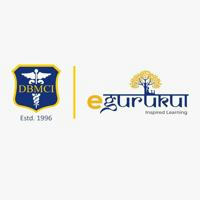
DBMCI eGurukul OFFICIAL
Join Our Official Channel & Get Access To •All DBMCI eGurukul Premium Faculties •Doubt Solving •Daily Questions For any Query 9810150067, 011-71366473 Or Kindly mail us on - [email protected]
Show more- Subscribers
- Post coverage
- ER - engagement ratio
Data loading in progress...
Data loading in progress...
Are you a final-year medical student preparing for the NEET PG 2025 exam? Join us as we map out the ultimate study roadmap to help you ace your preparations! In this video Dr. Rajat jain ( Moderator ) with Dr. Rajesh Gubba, Dr. Ramyasree, Dr. Kishan Rao, and Dr. Divya Madan, brings you valuable expert insights, strategies, and tips tailored specifically for 4th prof students. Optimize your study schedule, prioritize key topics, tackle challenging subjects, and ensure you're well-equipped to excel in one of India's most competitive medical entrance exams. Don't miss out on this comprehensive guide to charting your path from 4th prof to NEET PG success! Follow us on Social Media for all the latest updates: Instagram:
https://www.instagram.com/dbmci_egurukul_official/Facebook:
https://www.facebook.com/dbmciTwitter:
https://twitter.com/dbmci_officialLinkedIn:
https://www.linkedin.com/company/dbmciegurukulofficial/Subscribe to the channel for more videos 👉🏻
https://bit.ly/DBMCIYT- a. Hypochondriasis
- b. Somatization
- c. Somatoform pain disorder
- d. Obsessive Compulsive Disorder
